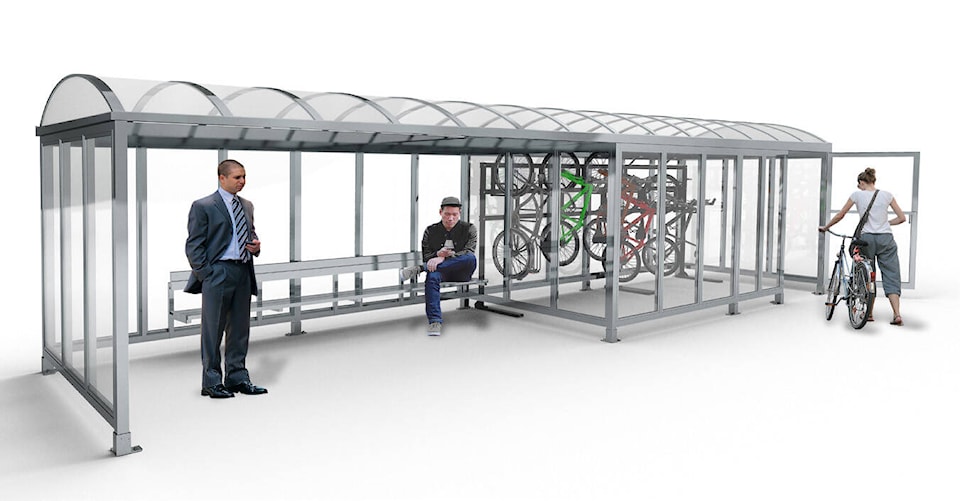Local cyclists could soon have the benefit of three covered and secure bike shelters provided the City of Terrace fleshes out a grant from the provincial government.
That provincial grant amounts to $156,555 but is conditional upon the city coming up with $67,095 for a total purchase and installation cost of $223,650. Each of the shelters would hold 10 bicycles.
“This project involves installing prefabricated secure bike parking shelters at public buildings that currently do not have such facilities. These end-of-trip facilities will be a first in Terrace and will promote biking to work by providing secure storage to prevent theft and will also keep bicycles dry,” said city communications advisor Kate Lautens.
“The shelters will give users a sense of space separate from motorists and enhance visibility and support for those biking to work. The shelters will also include a sitting area to facilitate changing from cycling clothes to other attire.”
The city’s portion of the financing would come from major grants received from the province two years for capital expenditures and planning but the allocation does require approval by city council as it puts together the city’s 2022 budget.
To date city planners have come up with three locations — the aquatic centre, city hall and the city’s public works complex on Graham on the southside — but they are subject to change.
Those locations would tend to favour city employees who are cyclists but must be open for the public.
“An application/registration system for public access to the shelters will be developed. Upon registration and deposit, the cyclist will receive the door key code for a certain duration (probably a year). Since space is limited, a fair system will be developed to allocate space to users (lottery, first-come, first-serve, or something similar),” said Lautens.
“If the program is successful and there is a demand for space, we may consider expanding the shelters and/or adding additional facilities at other public buildings.”
